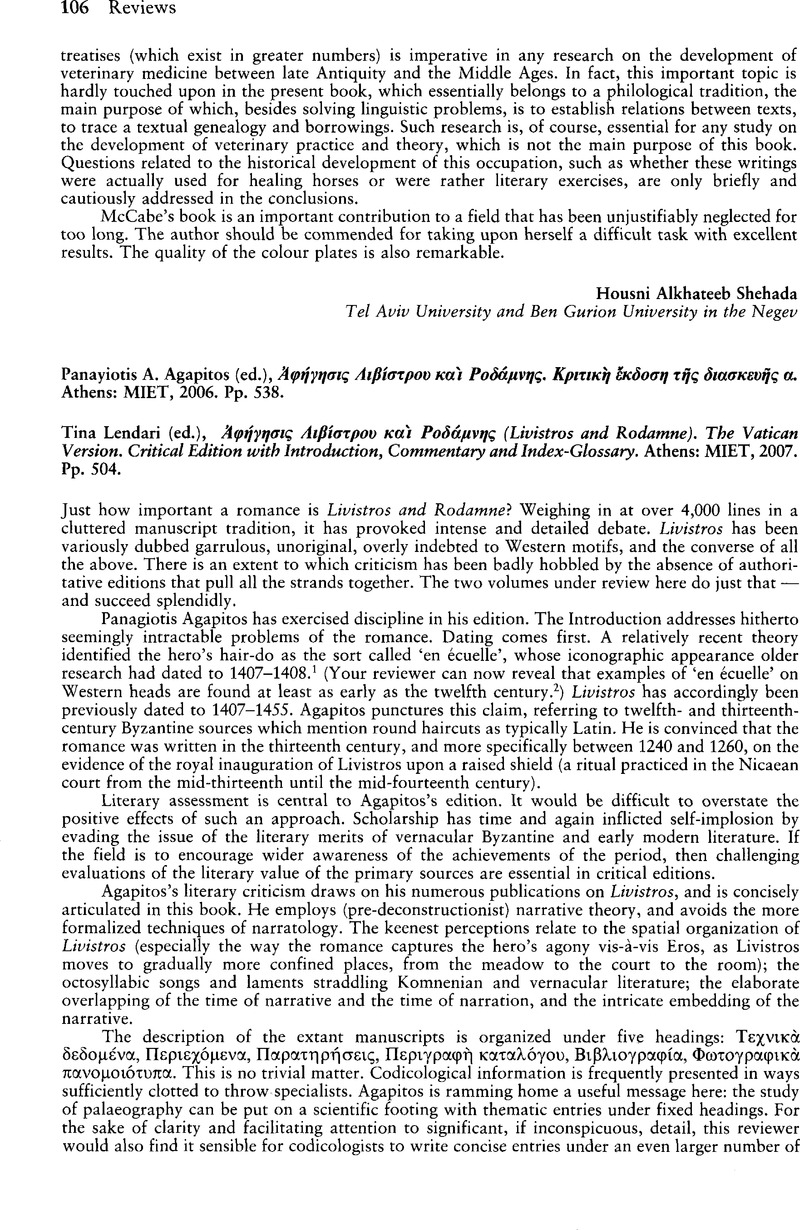No CrossRef data available.
Article contents
Panayiotis A. Agapitos (ed.), Άφήγησις Λιβίστρον καὶ Ροδάμνης. Κριτικὴ έκδοση τῆς διασκευῆς α. Athens: MIET, 2006. Pp. 538. - Tina Lendari (ed.), Άφήγησις Λιβίστρου καὶ Ροδάμνης (Livistros and Rodamne). The Vatican Version. Critical Edition with Introduction, Commentary and Index-Glossary. Athens: MIET, 2007. Pp. 504.
Published online by Cambridge University Press: 22 January 2016
Abstract

- Type
- Reviews
- Information
- Copyright
- Copyright © The Centre for Byzantine, Ottoman and Modern Greek Studies, University of Birmingham 2009
References
1 Harmand, Adrien, Jeanne d’Arc. Ses costumes, son armure. Essai de reconstitution (Paris 1929) 44 n.8.Google Scholar
2 See de Bellevaux, Burchard, ‘Apologia de barbis’, in Huygens, R. B. C. (ed.), Apologiae dvae [Corpus Christianorum 62] (Turnhout 1985) figs. 3–4 (between pp. 44-5), and ppGoogle Scholar. 218, 213–4. The ‘Apologia’ was possibly written in the early 1160s (see Bellevaux, ‘Apologia de barbis’, 137). Of course, there is no textual evidence that Livistros’s hair style is anything like as short as ‘en écuelle’ (i.e., shaved at the sides, front and back). It might equally well be longer, albeit round. For examples of longer round cuts, see the magnificent illuminations by Jehan de Grise (dated 1344) reproduced in James, M. R. (ed.), The Romance of Alexander: A Collotype Facsimile of MS Bodley 264 (Oxford 1933)Google Scholar.
3 See my descriptions in Yiavis, Kostas, ‘Finding Imberios and Margarona ’, Hellenika 56 (2006) 321-45Google Scholar.
4 Lendari has offered her comparison in a separate article (see ‘Livistros and Rodamni: Manuscript V’, in Panayotakis, N. M. (ed.), Origini della letteratura neogreca: atti del secondo Congresso Internazionale ‘Neograeca Medii Aevi’ (Venezia, 7-10 novembre 1991) (Venice 1993) 2: 135-47)Google Scholar.


